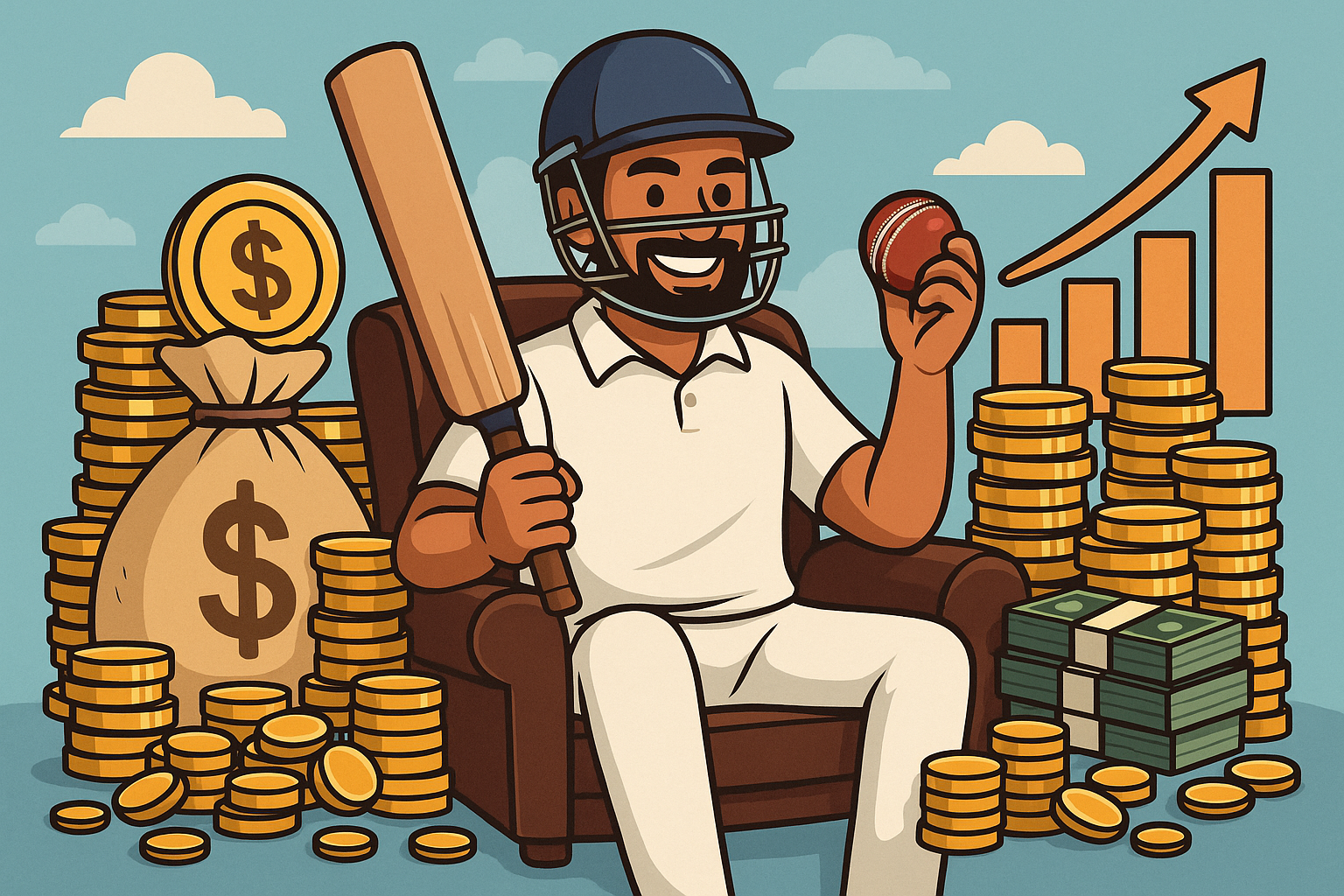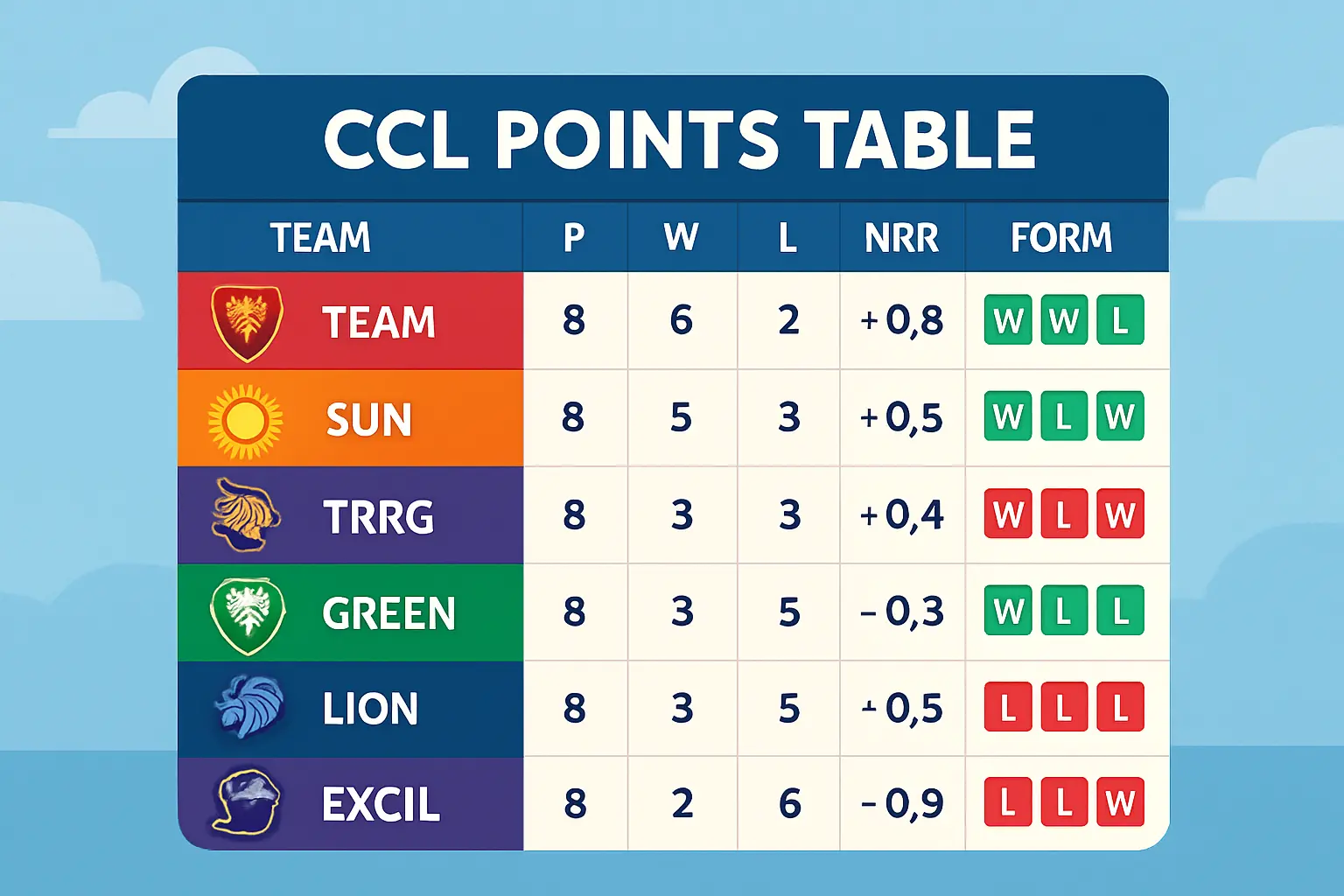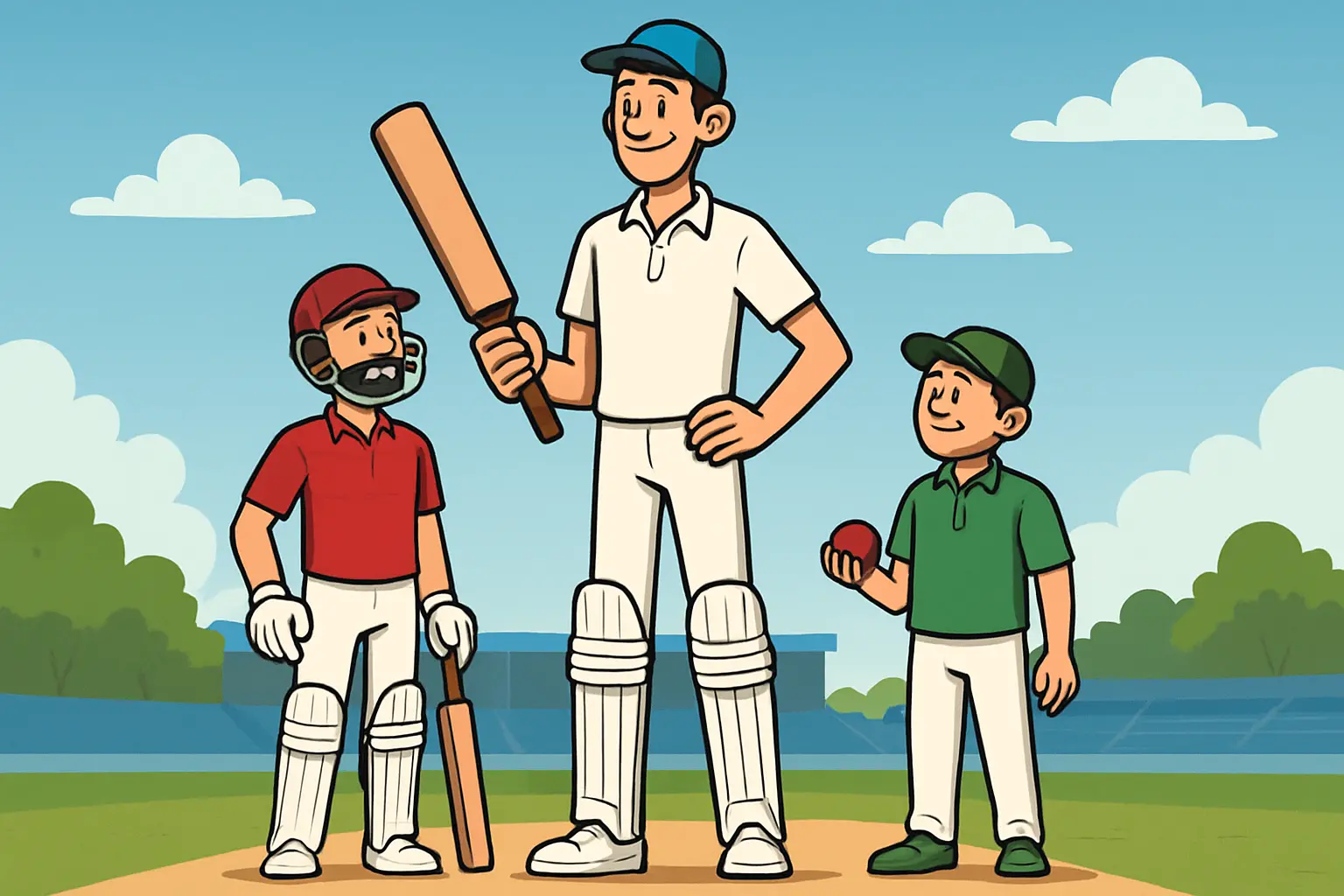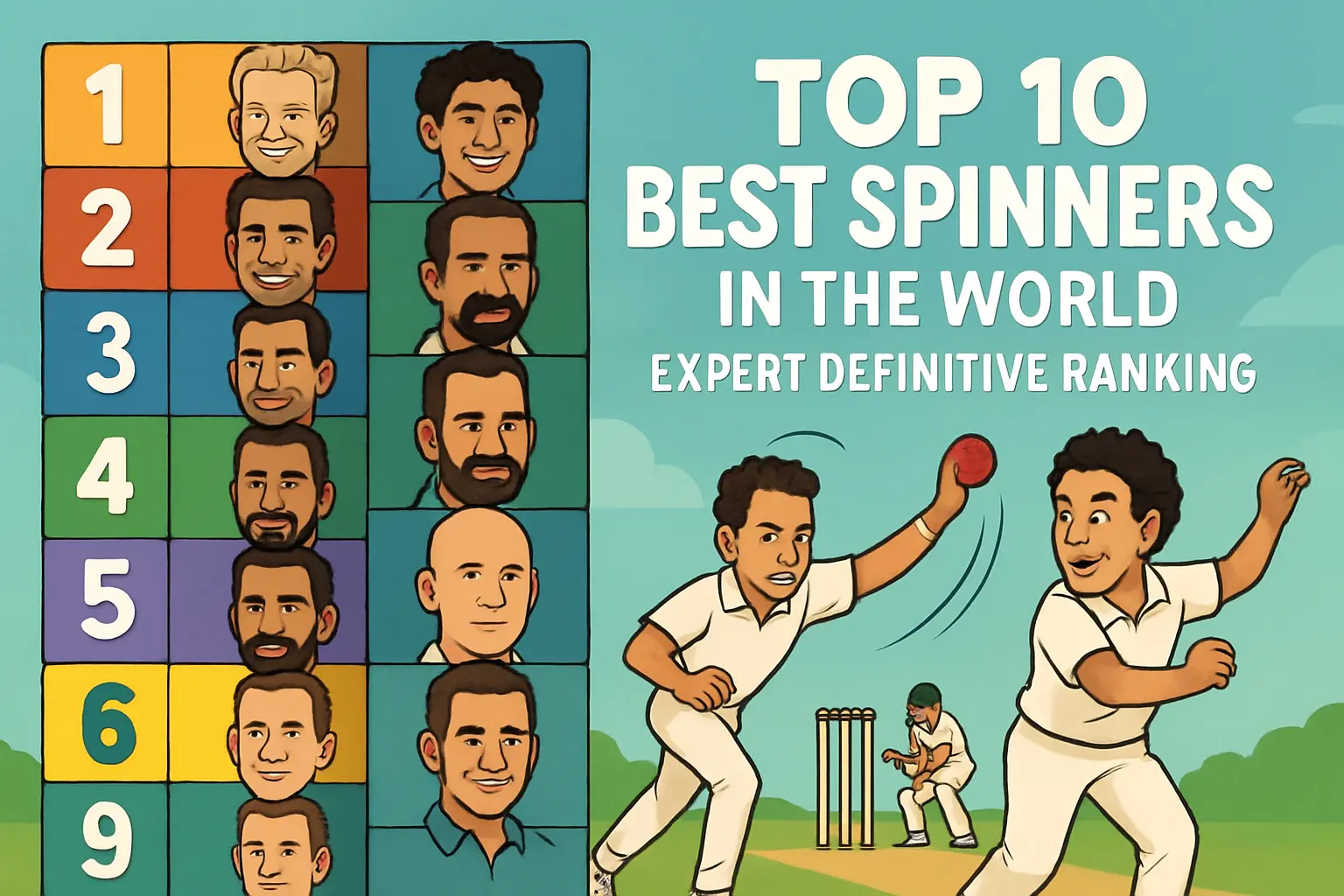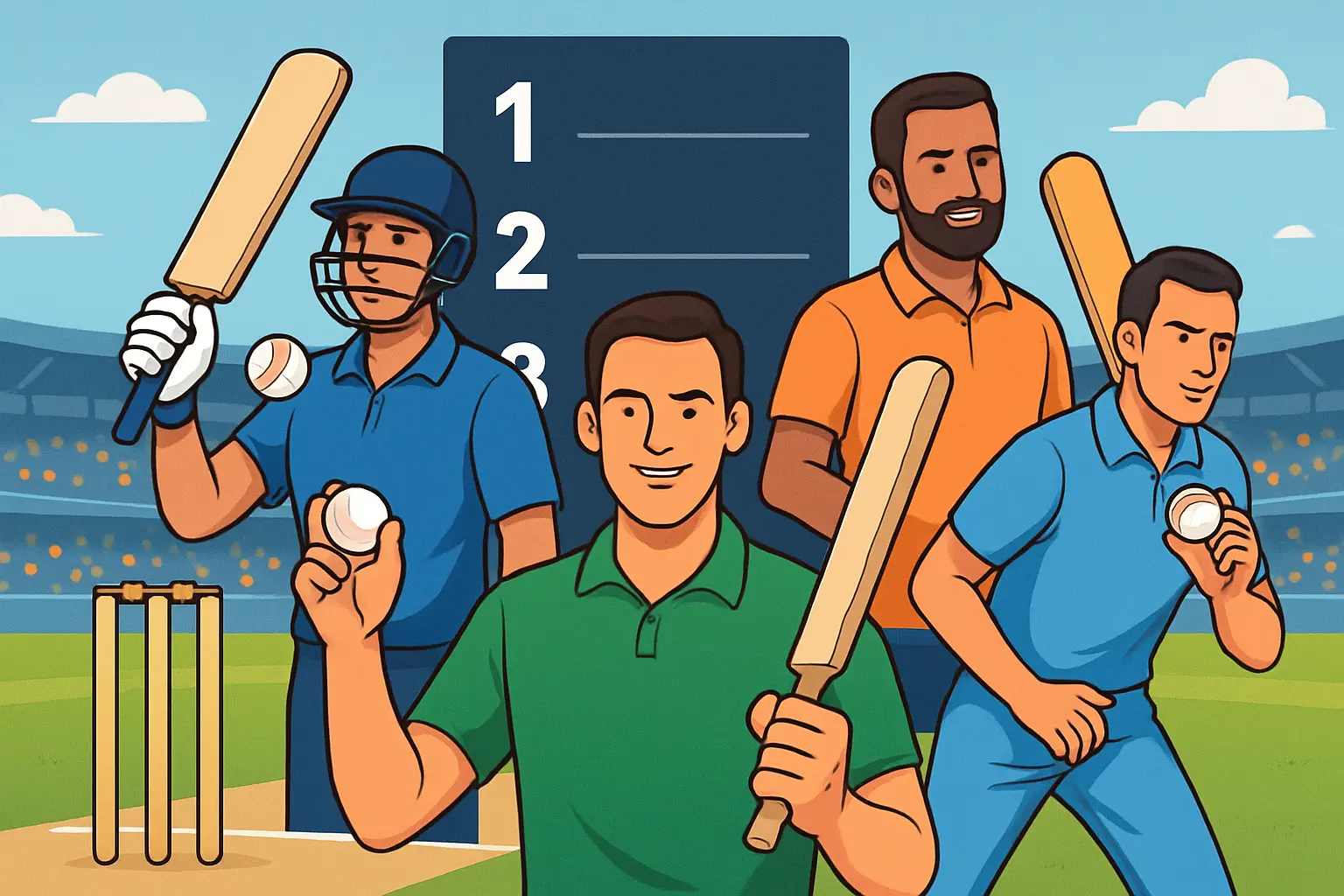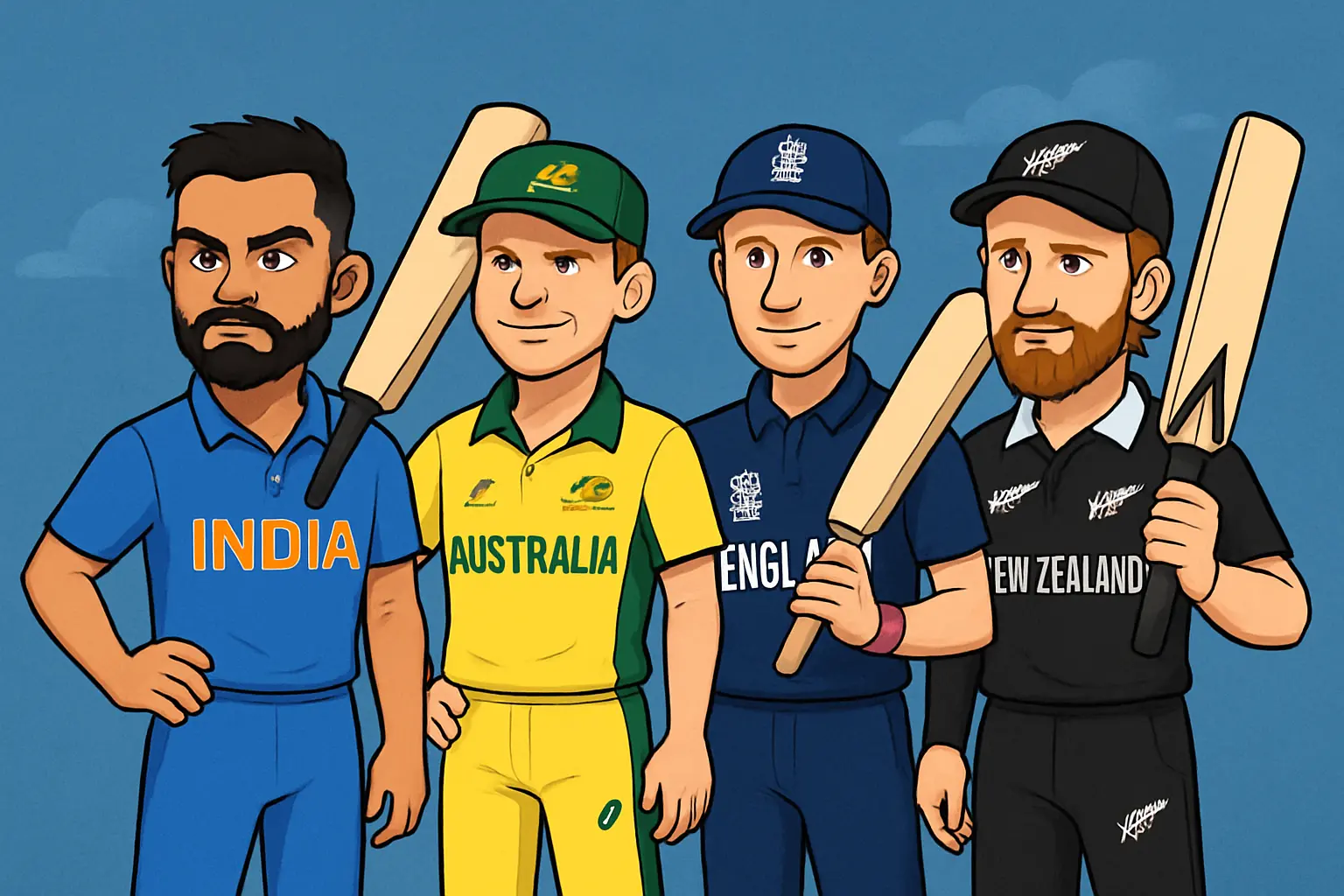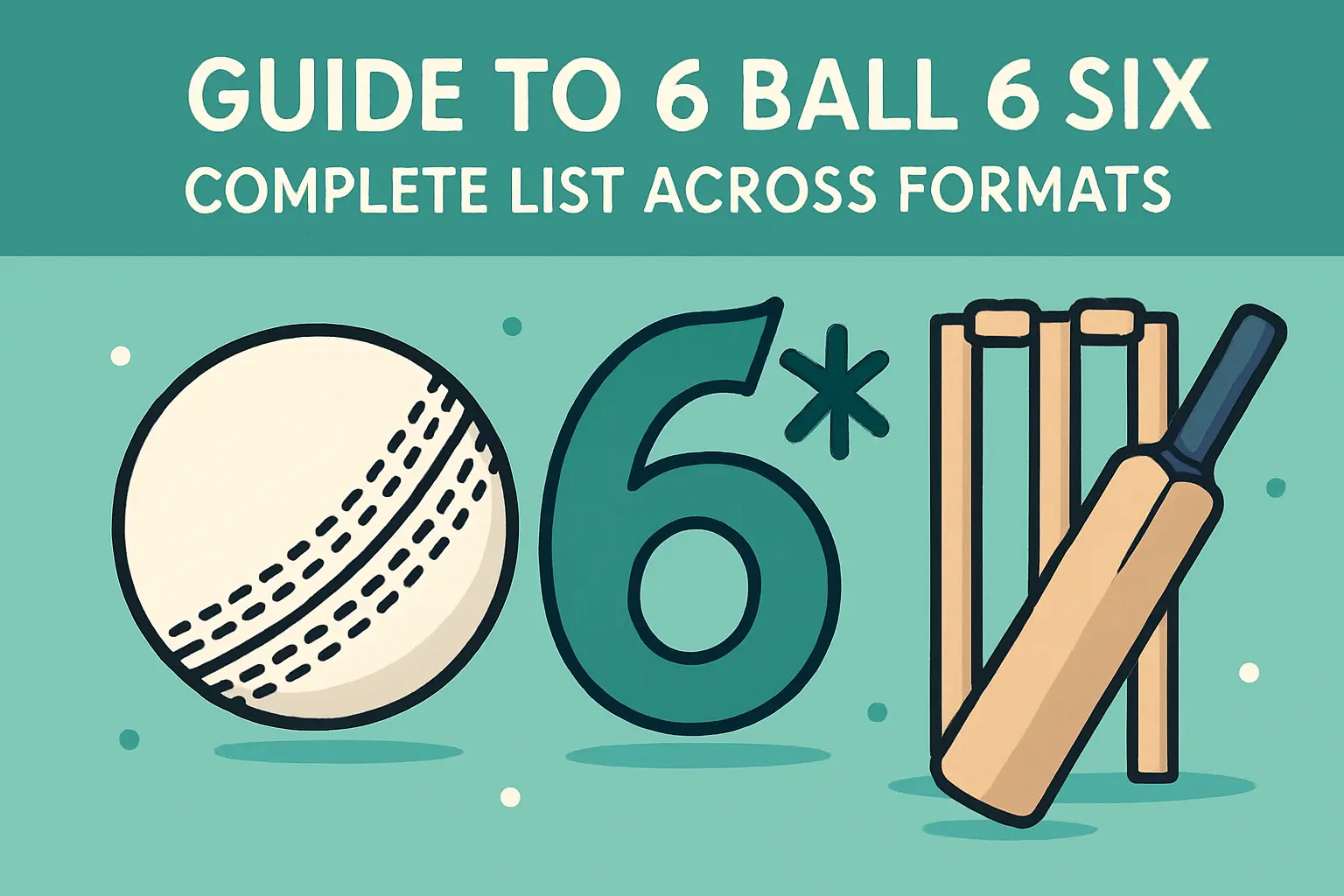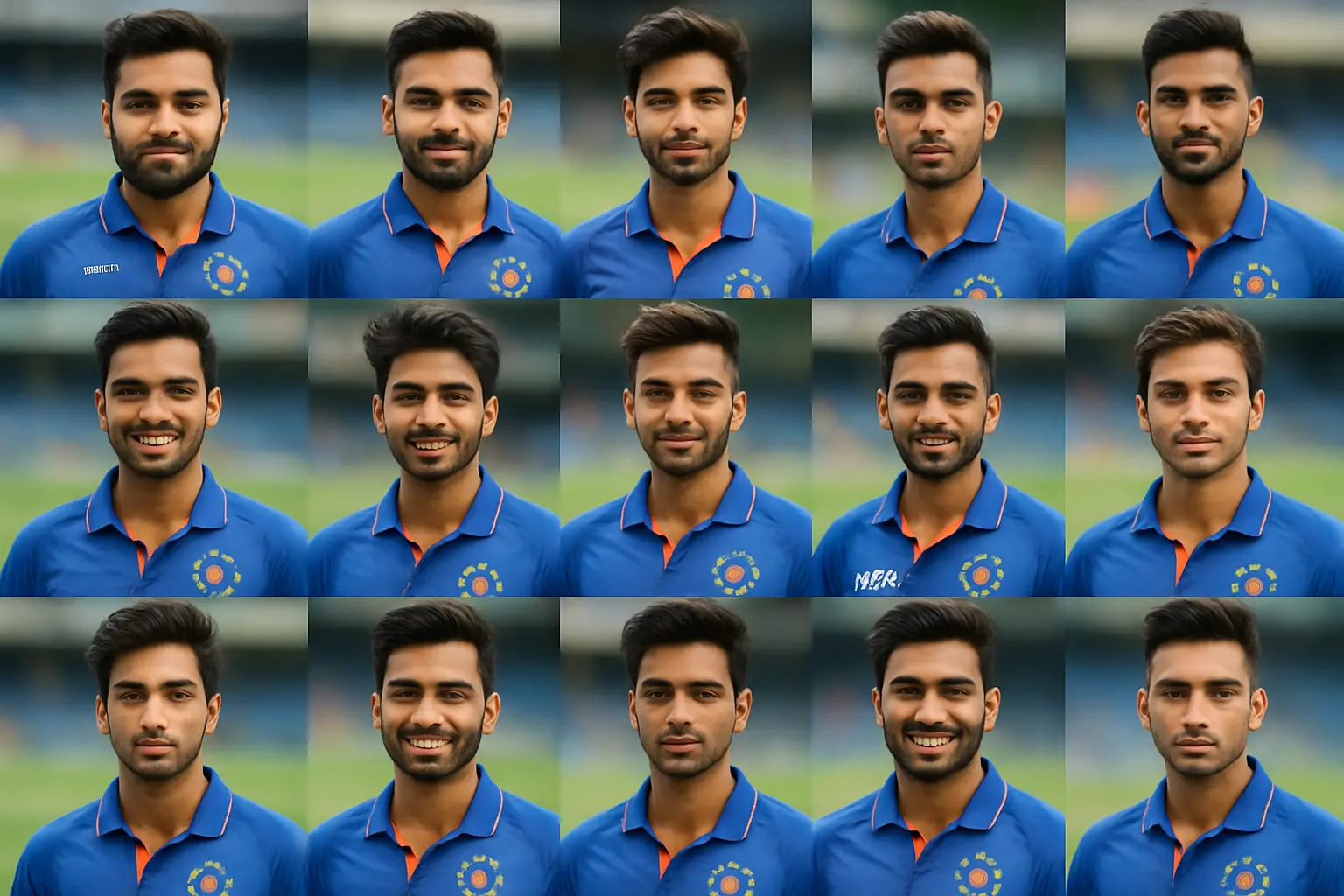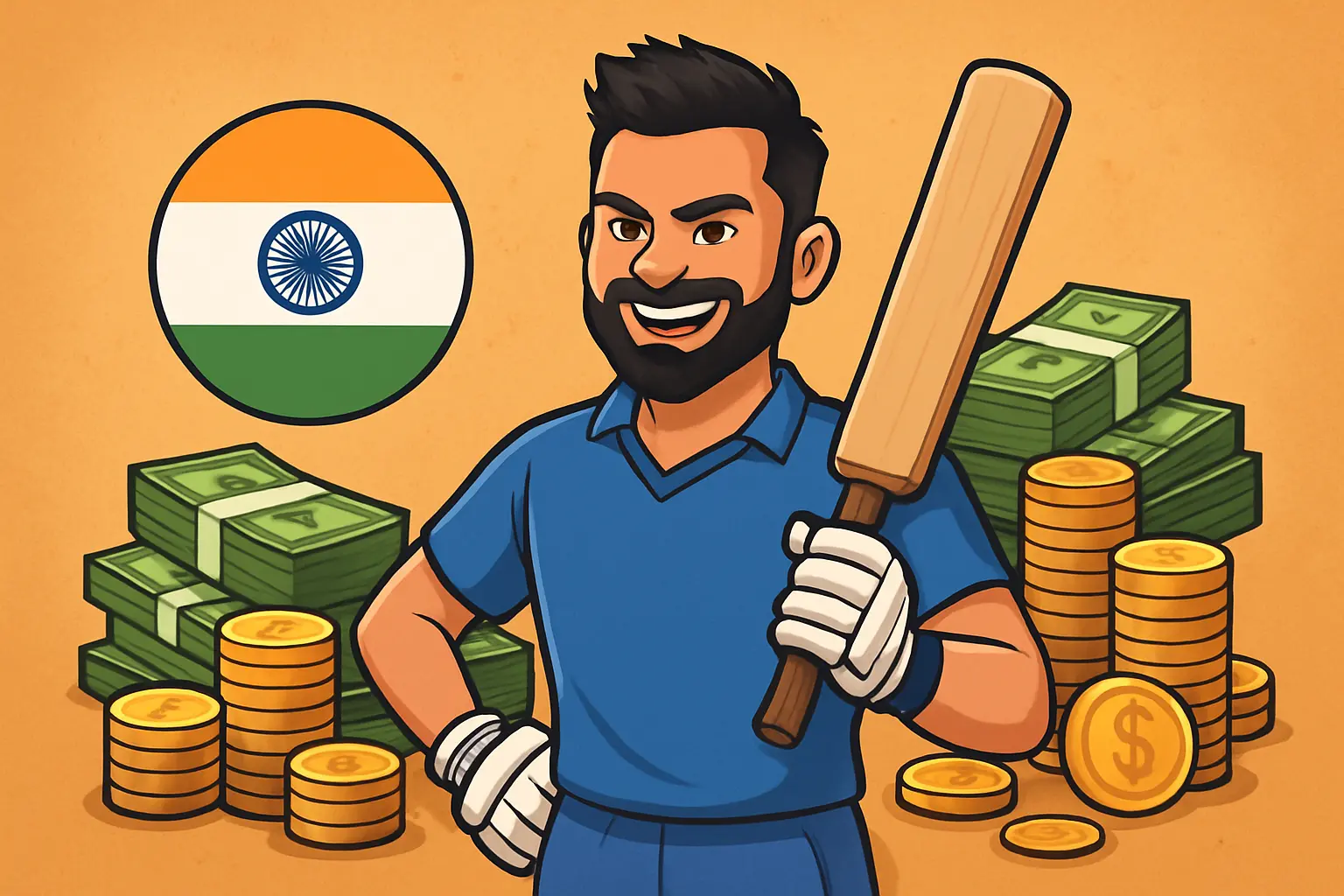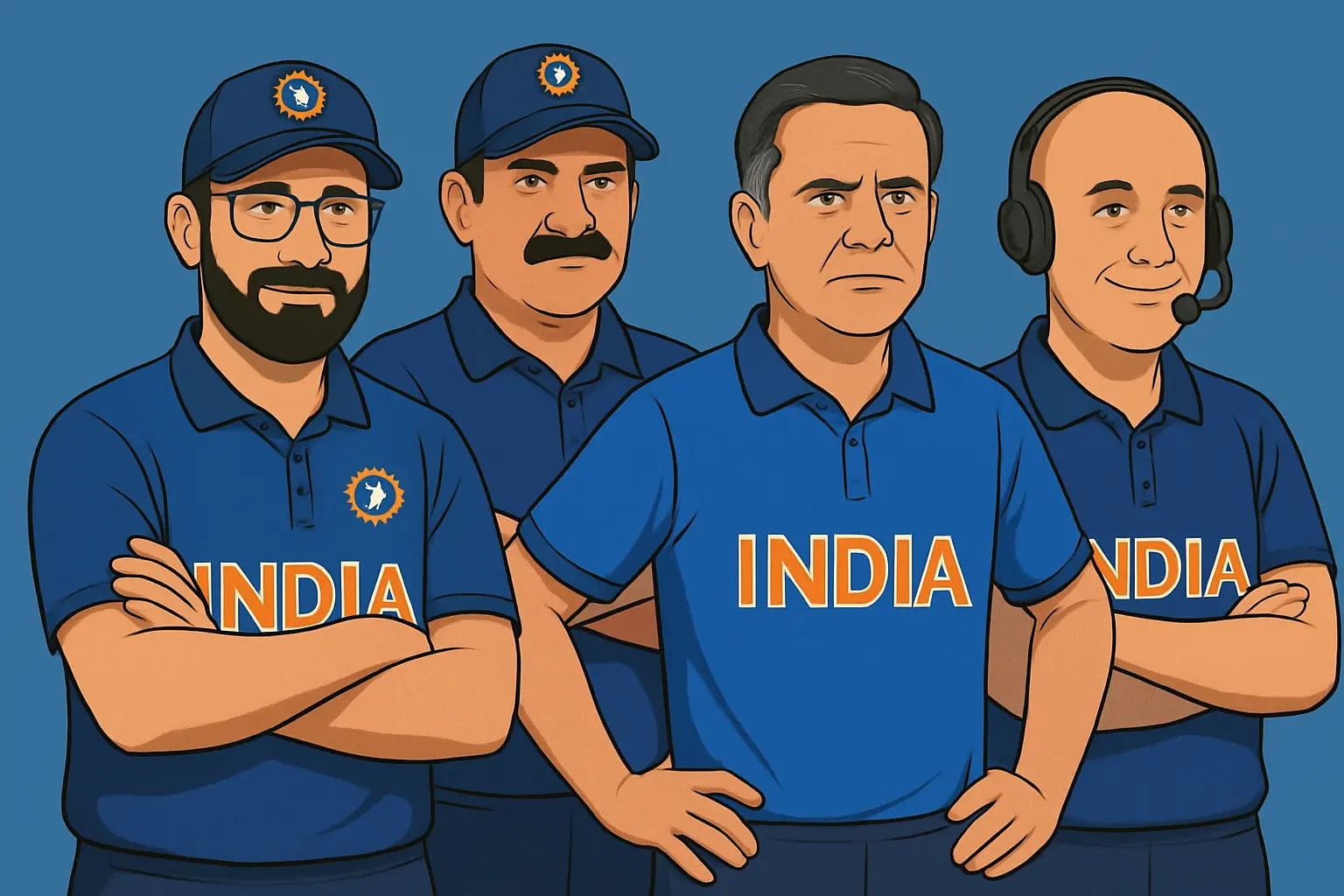Walk through any packed cricket ground and you can feel the hum of a multibillion-rupee economy in the air. Bats and blades are only one layer. The bigger machinery spins in the branding boxes, the TV trucks, the franchise boardrooms, and the quiet glass offices where agents negotiate retainers and image rights. The richest cricketer in the world doesn’t just trade on runs and wickets; he trades on trust, attention, and a lifetime’s worth of moments that made strangers feel something. That is the true currency of cricket wealth.
This is a clear-eyed, deeply reported hub on the world’s wealthiest cricketers—what “richest” truly means, how fortunes are built, who sits at the top, and why the list keeps moving. You’ll find transparent ranges (not sensational single numbers), income breakdowns across contracts, league deals, endorsements, and businesses, plus comparisons that fans argue over: Virat Kohli versus MS Dhoni, richest versus highest-paid, and why the most expensive IPL buys aren’t always the wealthiest players. It’s the kind of story you get only from someone who has worked inside the ecosystem—talking to agents, tracking board announcements, reading between the lines of brand deals, and watching how equity stakes quietly dwarf match fees.
What “richest” means here
- Richest = estimated net worth: assets minus liabilities, including cash, equity holdings, property, brand/IP value, and accumulated investment portfolios.
- Highest-paid = annual earnings in a given season: including contracts, match fees, bonuses, and endorsements.
- Most expensive IPL player = auction price or retention value: a team’s spend ceiling on a single player, not net worth.
Net worth estimates are presented as ranges. They are based on:
- Publicly reported central contract slabs and match fees from national boards.
- IPL and franchise league salary disclosures and media reporting.
- Brand endorsement announcements and industry rate cards.
- Company filings and press releases related to athlete-owned brands and investments.
- Media valuations (Forbes-style lists), marketing agency inputs, and historical deal data.
- Expert judgement on private holdings and long-term equity stakes.
Currency note: Figures are shown in USD and INR. For consistency, USD 1 ≈ INR 83 (rounded). Actual conversion and valuations can fluctuate.
Top 10 richest cricketers in the world (concise snapshot)
- Sachin Tendulkar — estimated USD 170–200 million (INR 1,410–1,660 crore)
- Virat Kohli — estimated USD 130–200 million (INR 1,080–1,660 crore)
- MS Dhoni — estimated USD 120–150 million (INR 1,000–1,245 crore)
- Sourav Ganguly — estimated USD 70–90 million (INR 580–750 crore)
- Brian Lara — estimated USD 45–60 million (INR 375–500 crore)
- Ricky Ponting — estimated USD 40–55 million (INR 330–455 crore)
- Yuvraj Singh — estimated USD 40–50 million (INR 330–415 crore)
- Virender Sehwag — estimated USD 40–45 million (INR 330–375 crore)
- Rohit Sharma — estimated USD 30–45 million (INR 250–375 crore)
- Chris Gayle — estimated USD 30–45 million (INR 250–375 crore)
A quick note on ranges and overlaps: Net worth isn’t a scoreboard. It moves with markets, new endorsements, IPL contracts, and private deals. The margins between the top three are narrow and can swing with one major brand signing or a strategic equity position.
Rankings table: world’s wealthiest cricketers (estimates)
| Rank | Player | Country | Estimated Net Worth (USD) | Estimated Net Worth (INR) | Primary Income Sources |
|---|---|---|---|---|---|
| 1 | Sachin Tendulkar | India | 170–200m | 1,410–1,660 cr | Endorsements, legacy licensing, investments, businesses, properties |
| 2 | Virat Kohli | India | 130–200m | 1,080–1,660 cr | Endorsements, equity in brands, franchise cricket, social media/IP |
| 3 | MS Dhoni | India | 120–150m | 1,000–1,245 cr | Endorsements, IPL salary, lifestyle brand, investments |
| 4 | Sourav Ganguly | India | 70–90m | 580–750 cr | Endorsements, administration roles, TV, businesses |
| 5 | Brian Lara | West Indies | 45–60m | 375–500 cr | Endorsements, commentary/TV, appearances, properties |
| 6 | Ricky Ponting | Australia | 40–55m | 330–455 cr | Coaching, commentary, endorsements, investments |
| 7 | Yuvraj Singh | India | 40–50m | 330–415 cr | Endorsements, venture investments, appearances |
| 8 | Virender Sehwag | India | 40–45m | 330–375 cr | Commentary/TV, endorsements, ventures |
| 9 | Rohit Sharma | India | 30–45m | 250–375 cr | BCCI/IPL salaries, endorsements, investments |
| 10 | Chris Gayle | West Indies | 30–45m | 250–375 cr | Franchise leagues, endorsements, music/brand IP |
Sources and methodology notes per player appear later in the profile sections. These figures exclude vague or unverified claims frequently repeated online, such as mixing up the Australian entrepreneur Adam Gilchrist (fitness) with the cricketer Adam Gilchrist.
Player-by-player deep dive: income streams, background, and why the number is where it is
1) Sachin Tendulkar — the world’s richest cricketer (estimate: USD 170–200m)
No athlete has reaped cricket’s brand dividend longer or with more cross-generational trust. Even as the game moved from whites to night-lights, Tendulkar’s image stayed clean, reliable, and endlessly marketable. That’s why his endorsement tail outlived his career and why his licensing deals continue to find life—limited-edition memorabilia, co-branded lines, and carefully chosen partnerships.
Income streams:
- Endorsements and licensing: From the MRF blade on his bat to global brands and Indian consumer majors, Tendulkar’s partner list reads like a time capsule of Indian advertising. His approach has always been conservative: few but long-standing relationships, with lifetime-ambassador positioning where possible.
- Investments and businesses: Managed via SRT Sports Management and allied entities. He has been associated with sports ventures, restaurants, and an evolving portfolio of private investments. He’s kept risk relatively low, emphasizing stable, annuity-like brand income.
- Media and appearances: Premium fees for events, television features, and documentaries.
- Properties and IP: High-value residential real estate and the enduring value of the “Tendulkar” IP in cricket’s biggest market.
Why the estimate makes sense:
The long runway of brand value, consistent monetization post-retirement, Indian market size, and a disciplined investment posture. Multiple credible finance and sports-business trackers have kept him at or near the top for years—not on hype, but on compounding.
Sources and signals:
Brand deal announcements, Indian business press reporting, long-term endorsement continuity, and industry rate-card ranges.
2) Virat Kohli — modern cricket’s commercial center of gravity (estimate: USD 130–200m)
Kohli brought a new language to cricket endorsements: performance-first, fashion-forward, social-native. He is the rare athlete who bridges traditional TV campaigns and direct-to-consumer drops via his own labels. If Tendulkar is compounding, Kohli is velocity—the momentum of a still-active global star with unmatched social reach.
Income streams:
- Endorsements: Multi-year deals with sportswear, automotive, fintech, beverages, grooming, and telecom/tech. His bat sponsorship is among cricket’s richest single-asset deals.
- Equity and owned brands: One8 (with a leading sportswear partner), fashion and lifestyle plays, and startup stakes in food-tech and consumer brands. Where earlier generations took fees, Kohli often takes equity slices—this is the lever that can push him past anyone in the long run.
- Cricket salaries: BCCI central contract at the top tier and franchise salary. Both are dwarfed by endorsement/brand income but offer steady base cash.
- Social IP: One of the world’s most-followed athletes. Per-post social income and bundled campaign integrations can equate to what some players earn in an entire season.
Why the estimate makes sense:
Extraordinary endorsement pricing power in India, equity upside, and durable mainstream appeal. The lower bound reflects cash realized and conservative equity valuations; the upper bound accounts for brand holdings appreciating over time.
Sources and signals:
Major brand press releases, valuation lists for celebrity brand value, BCCI contract slabs, IPL salary disclosures, and marketing agency quotes for social media pricing.
3) MS Dhoni — India’s master of retention value (estimate: USD 120–150m)
Dhoni is a case study in trust economics. He rarely posts, rarely speaks at length, and still moves product with a nod. His public persona—calm, reliable, the great finisher—translates beautifully to brand narratives that want credibility over noise. Even after international retirement, his salience in the IPL and regional markets has hardly dimmed.
Income streams:
- Endorsements: Automotive lubricants to fintech, beverages to fantasy sports, durable goods to consumer tech. Dhoni’s sheet shows breadth and longevity.
- IPL salary: A top-tier retainer for a legacy franchise figure. The precise number has varied with cap structures and loyalty discounts.
- Businesses: The lifestyle brand “Seven,” investments in sports and FMCG ventures, and selective startup backings. Often structured for lower distraction and steady cash returns.
- Appearances and content: High-value shoots and integrated roles in major campaigns; cameo content plays that flood TV and OTT around the IPL.
Why the estimate makes sense:
Long-term endorsements with reliable re-ups, IPL visibility, and a strategic business posture. His income is less spiky than Kohli’s, but the annuity is dependable, and the associated equity stakes add ballast.
Sources and signals:
Endorsement announcements, IPL retention reporting, India Cements-related disclosures, and consumer goods partnerships covered by Indian business media.
4) Sourav Ganguly — the administrator-entrepreneur with primetime recall (estimate: USD 70–90m)
The former India captain evolved into cricket’s best-known administrator and prime-time TV personality. “Dada” is the axis of multiple incomes: brand deals, network fees, chairman roles, and business associations. His authority in Indian cricket’s corridors amplified his commercial posture.
Income streams:
- Endorsements: Banks, ed-tech, consumer goods, and regional powerhouses.
- Administration and TV: Board-level roles, network presence, and show formats built around his persona.
- Investments: Mix of private holdings and commercial associations.
Why the estimate makes sense:
Multiple top-tier income channels in India’s largest market, long media presence, and high regional penetration.
Sources and signals:
Public statements around board roles, TV network deal reporting, and brand campaign launches.
5) Brian Lara — West Indian legend with global brand equity (estimate: USD 45–60m)
Lara’s on-field genius still sells. Between commentary, appearances, brand partnerships, and legacy content, he remains one of cricket’s most famous global names, especially in luxury markets that prize the romance of batting artistry.
Income streams:
- Endorsements and appearances: Luxury, lifestyle, and sports brands across the Caribbean, UK, and India. High-value private events and corporate talks.
- Commentary and analysis: Prominent TV roles and series featuring modern batting clinics that carry premium rates.
- Properties and IP: Investments in real estate and exploitation of his storied cricket IP for content.
Why the estimate makes sense:
Global fame, active media career, and strong brand pairing with legacy narratives.
Sources and signals:
Broadcast contracts reported by sports media, endorsements across multiple geographies, and event circuit activity.
6) Ricky Ponting — leader-analyst and elite coach (estimate: USD 40–55m)
Australia’s most successful captain turned into an A-list commentator and a coveted T20 coach. Ponting’s value sits at the intersection of sharp analysis and demonstrably improving batting units wherever he goes.
Income streams:
- Coaching: IPL and other T20 leagues at premium head-coach rates.
- Commentary: Frontline roles with Australian and global broadcasters.
- Endorsements: Equipment brands, Australian corporate partners, and wine/real estate interests.
- Investments: Property and private market positions consistent with Australian athlete wealth.
Why the estimate makes sense:
Steady, high-value contracts in coaching and TV plus asset growth in Australia’s property markets.
Sources and signals:
Coaching appointment announcements, broadcast roster listings, and brand/PR releases.
7) Yuvraj Singh — World Cup hero, venture investor (estimate: USD 40–50m)
Few Indian cricketers command the emotional capital Yuvraj does. The six sixes, the comeback from illness, the swagger—these make him evergreen for brands chasing youth culture and nostalgia. Behind the scenes, he’s built a venture portfolio that places him among India’s most active athlete-investors.
Income streams:
- Endorsements: Fashion, beverages, sports tech, and digital-first brands.
- Ventures: YouWeCan Ventures, with stakes across early-stage companies.
- Appearances and content: A staple of OTT docs, campaigns, and cricket events.
Why the estimate makes sense:
Strong brand cachet, long endorsement runway, and venture upside.
Sources and signals:
Public venture portfolio disclosures, brand campaigns, and media reporting on exits and new rounds.
8) Virender Sehwag — commentary powerhouse and digital-native personality (estimate: USD 40–45m)
Sehwag reinvented himself as a digital-first storyteller. His commentary style—punchy, meme-ready, and often profound—bridged the TV-to-social gap and made him a must-have in Indian broadcast lineups. Brands that want wit with wisdom sign him quickly.
Income streams:
- Commentary and TV: Major domestic and global rights cycles keep him in rotation.
- Endorsements: Consumer goods, education tech, fantasy platforms, and regional brands.
- Digital media: High-value integrations across personal social channels and shows.
Why the estimate makes sense:
High media utilization, brand friendly persona, and sustained relevance among new-age cricket audiences.
Sources and signals:
Broadcast contracts, sponsorships across TV and digital series, and public social collaborations.
9) Rohit Sharma — captain with big-league endorsement appeal (estimate: USD 30–45m)
Rohit’s endorsement strength has surged with leadership and on-field success. He’s authentic, family-forward, and speaks to a pan-India sensibility. He’s also a top-tier BCCI central contract holder and among the most valuable IPL captains historically.
Income streams:
- BCCI and IPL: A+ central contract retainer and a leading IPL salary tier.
- Endorsements: Sportswear, fintech, consumer electronics, mattresses, beverages, and more.
- Investments: Increasing allocation toward growth-stage Indian consumer brands and real estate.
Why the estimate makes sense:
Top-tier playing incomes plus growing endorsement stack, aligned to India’s consumer boom.
Sources and signals:
Board contract slabs, IPL retention brackets, and brand campaign rollouts.
10) Chris Gayle — franchise phenomenon and lifestyle brand (estimate: USD 30–45m)
“Universe Boss” is not just a nickname; it’s a licensing platform. Gayle toured the world’s T20 leagues and made himself the face of cricket nightlife—music, apparel, appearances, and social-first entertainment.
Income streams:
- Franchise leagues: IPL legacy earnings; PSL, CPL, and other T20 leagues through his prime years.
- Endorsements: Caribbean and global lifestyle brands, gaming, and beverages.
- Music and IP: Tracks, shows, and branded appearances.
Why the estimate makes sense:
Prolonged multi-league earnings, high-visibility endorsements, and IP extensions.
Sources and signals:
League contract reporting over the years, campaign announcements, and festival/event appearances.
Important myths, corrected
- No verified USD billionaire cricketer. In INR terms, several Indian greats are “billionaires” because INR 100 crore = 1 billion rupees. That’s not the same as a USD billionaire. Any such claim in USD is unsubstantiated.
- Adam Gilchrist is not worth hundreds of millions from F45. That Adam Gilchrist is an Australian entrepreneur, a different person. The cricketer Adam Gilchrist’s net worth is far lower and not in the global top tier.
- Auction price ≠ net worth. The most expensive IPL buy in a given auction may not even crack the top ten richest by net worth.
Richest vs highest-paid vs most expensive IPL: what fans mix up
- Richest cricketer in the world: lifetime wealth built from salaries, endorsements, equity, and smart allocation.
- Highest-paid cricketer in a season: who earns the most cash within a calendar cycle—big seasons can tilt this dramatically, especially when captains sign new central contracts or close major endorsements.
- Most expensive IPL player: a single auction metric. It matters for headlines, not net worth.
A simple comparison snapshot
| Category | What it measures | Typical leaders |
|---|---|---|
| Richest (net worth) | Lifetime accumulated wealth | Sachin Tendulkar, Virat Kohli, MS Dhoni |
| Highest-paid (annual) | One season’s earnings | Often active captains, elite all-format stars, and India’s top endorsers |
| Most expensive IPL | Auction/retention price | Big-strike Indian batters, rare overseas all-rounders, in-form pace leaders |
Country-wise richest cricketers
India
- Sachin Tendulkar — USD 170–200m
- Virat Kohli — USD 130–200m
- MS Dhoni — USD 120–150m
- Sourav Ganguly — USD 70–90m
- Rohit Sharma — USD 30–45m
Also notable: Yuvraj Singh, Virender Sehwag, Sunil Gavaskar, Kapil Dev, Rahul Dravid.
Australia
- Ricky Ponting — USD 40–55m
- Steve Smith — USD 25–35m
- David Warner — USD 25–35m
- Shane Warne (estate) — estimates vary, often placed in the USD 40–50m band
Also notable: Pat Cummins and other centrally contracted captains approach the upper-mid tiers through CA deals, IPL, and endorsements.
England
- Ben Stokes — USD 25–35m
- Joe Root — USD 20–30m
- Jos Buttler — USD 20–30m
ECB central contracts plus The Hundred and the IPL create solid earnings bases, amplified by endorsements for marquee names.
Pakistan
- Shahid Afridi — USD 25–35m
- Wasim Akram — USD 20–30m
- Shoaib Akhtar — USD 15–25m
Active stars like Babar Azam and Shaheen Afridi are rising; their net worths lag India’s elite due to smaller domestic endorsement markets but are trending upward with global leagues.
South Africa
- AB de Villiers — USD 25–35m
- Jacques Kallis — USD 20–30m
- Faf du Plessis — USD 15–25m
Legacy IPL earnings and commentary/coaching top-ups are key levers.
New Zealand
- Kane Williamson — USD 15–25m
- Brendon McCullum — USD 15–25m
- Ross Taylor — USD 10–18m
NZC retainers are modest; IPL and coaching roles (McCullum) matter.
Sri Lanka
- Kumar Sangakkara — USD 20–30m
- Mahela Jayawardene — USD 20–30m
Both parlayed elite cricket IQ into coaching, commentary, and franchise strategy roles.
Bangladesh
- Shakib Al Hasan — USD 20–30m
- Tamim Iqbal — USD 10–15m
- Mushfiqur Rahim — USD 10–15m
The Dhaka market’s endorsement scene and franchise leagues support top-enders.
West Indies
- Brian Lara — USD 45–60m
- Chris Gayle — USD 30–45m
- Kieron Pollard — USD 20–30m
Franchise league ecosystems are the core engine, complemented by brand deals and post-career roles.
How cricketers really earn: the four engines of wealth
1) Central contracts and match fees
- India (BCCI): A+ retainers sit at the top; match fees for Tests are significantly higher than for ODIs and T20Is. ICC tournament bonuses and board performance bonuses add sharp spikes.
- Australia (CA): Central contracts mix retainers with match fees; players can earn upgrades through performance. Strong currency and a stable player MoU underpin healthy top-tier earnings.
- England (ECB): Separate red-ball and white-ball contracts, plus match fees and The Hundred contracts. Marquee players can stack incomes cleverly across formats.
- Pakistan, Sri Lanka, Bangladesh, New Zealand, South Africa: Retainers are modest compared with India, England, and Australia; PSL, CPL, BPL, SA20, and other league stints become crucial.
2) Leagues (IPL and beyond)
- IPL: The single biggest salary engine in cricket. Top Indian stars and rare overseas all-rounders command the highest brackets. Retentions can be as valuable as auction wins.
- PSL, SA20, BBL, CPL, The Hundred, ILT20: Solid earners that complement national retainers, especially for non-Indian players.
3) Endorsements and image rights
- India is the gravitational center of cricket endorsements. A-list Indian cricketers can out-earn their contracts several-fold through brand deals. Global brands use them across South Asia, the Middle East, and diaspora markets.
- Bat sponsorships are a goldmine for top batsmen; single-asset deals rival annual league salaries for elite names.
- Social IP adds a modern revenue layer: per-post rates, bundled influencer campaigns, and creator-led product drops.
4) Businesses and investments
- Athlete-owned brands can flip the script from fee to equity. A successful D2C label or a savvy startup stake can be worth more than multiple seasons of match fees.
- Real estate remains a preferred store of wealth, offering long-term appreciation and rental income.
- Post-career coaching, commentary, and administration keep cash flows healthy and visibility high.
Kohli vs Dhoni vs Sachin: the richest debate, settled with context
- Sachin Tendulkar: The most secure long-term net worth on the board. An unmatched legacy that sells forever, plus conservative allocation. His wealth base was built early and compounded.
- Virat Kohli: The most potent upside story thanks to equity and social-native clout. Endorsements remain robust; owned brands could push him past anyone over time.
- MS Dhoni: The most stable annuity-like income from endorsements and IPL presence. He rarely makes noise and routinely lands closing scenes in big national campaigns.
If you’re looking for a final whistle right now, Tendulkar holds the edge as the world’s richest cricketer. But the overlap is real, and one landmark liquidity event for Kohli could change the order.
IPL wealth: richest IPL player versus richest cricketer
- Richest IPL player: Think in terms of cumulative IPL earnings plus ongoing endorsements tied to IPL visibility. Dhoni, Rohit Sharma, and Kohli sit high on this metric. Their long association with super-successful franchises, constant presence in playoffs, and fandom in core metros lifts their brand pricing.
- Most expensive player in an auction: A snapshot stat. It rewards timing, team needs, and scarcity (particularly multi-phase all-rounders or in-form speed merchants). It doesn’t tell you net worth.
Highest-paid cricketer in a season: why it changes year-to-year
A superstar can stack:
- A+ central retainer
- Full slate of match fees across formats
- A major ICC tournament bonus
- IPL/league salary at the top bracket
- Two or three tentpole endorsements booked to the season’s media calendar
On such a run, an active India captain or a global face like Kohli might top the annual earnings chart, even if Tendulkar remains the wealthiest by net worth.
Richest retired cricketers: the power of a long tail
- Sachin Tendulkar — a textbook case of legacy monetization
- MS Dhoni — semi-retired internationally but a goldmine in the IPL era
- Sourav Ganguly — media and administration
- Brian Lara — commentary and premium appearances
- Ricky Ponting — coaching/TV hybrid with stable growth
- Sunil Gavaskar — decades of commentary, endorsements, and legacy status
Debunking social-media myths about cricketers’ money
- “Instagram earnings make players instantly richer than legends.” Social is a powerful income stream, but it’s volatile. Long-term net worth depends on equity allocations and diversified assets, not just per-post sprints.
- “The highest bid in the IPL equals the richest cricketer.” That’s like confusing a signing bonus with a bank balance.
- “Cricketers are richer than footballers.” In global averages, football’s top-tier is richer. Cricket’s top rung in India rivals elite sports earners, but the global football economy is larger.
The economics behind brand value in cricket
- India’s scale: Over a billion people, a sport that commands prime-time attention, and a consumer market exploding across categories. The best Indian cricketers are not just athletes; they are national storytellers for brands.
- Scarcity: Only a handful of cricketers become cross-demographic, pan-regional icons. That scarcity pushes rates higher for the chosen few.
- Trust factor: Scandals dent deals; authenticity multiplies them. Tendulkar and Dhoni are trust titans; Kohli is performance-fueled aspiration. All three represent universal human values brands love.
Women’s cricket: the wealth curve is steepening
The launch of a women’s franchise league in India changed the economics overnight. Player retainers, auction values, and endorsements rose sharply, and the top Indian women’s stars now appear in mainstream consumer campaigns.
- Smriti Mandhana: Market leader with the biggest contracts in women’s franchise cricket and a crowded endorsement sheet across beauty, tech, and consumer brands.
- Harmanpreet Kaur: India captain’s premium plus strong franchise profile.
- Ellyse Perry, Alyssa Healy, and other global stars: With India’s market opening to women’s cricket, cross-border brand deals are more common. Net worth is rising from a smaller base, with a long runway ahead.
Where do endorsements pay the most in cricket?
- India: highest absolute values
- UK/Australia: strong for centrally contracted captains and stars with global resonance
- Middle East: a rising hub for brand integrations and league-linked campaigns
- South Asia beyond India: Pakistan, Bangladesh, Sri Lanka provide regional deals, but values are lower than India
Endorsement categories that favor cricketers:
- Consumer tech and gadgets
- Financial services and fintech
- Automotive and lubricants
- Apparel, footwear, and athleisure
- Beverages (both legacy and new-age)
- Fantasy gaming and sports platforms
Cricket’s wealth ladder: how a player climbs
Stage 1: Emerging talent
- Domestic contract + modest match fees
- Regional brand introductions
- First equipment deals
Stage 2: National breakout
- National central contract
- Initial IPL/league salary
- Mid-tier endorsements with rising rates
Stage 3: Star consolidation
- A+ contracts, highest IPL brackets
- Multi-category endorsements with national rollouts
- First equity deals; investments in startups and D2C brands
Stage 4: Legacy and post-career
- Commentary/coaching/administration roles
- Enduring endorsements and licensing
- Real estate and passive income streams
- Long-term brand IP around name, number, and signature shots
Sources and transparency: how these estimates are built
- National board announcements for contract grades and match fees
- IPL and other league retention and auction disclosures
- Brand deal press releases and financial press coverage
- Athlete-owned company filings and venture portfolio news
- International valuation lists (brand value, celebrity earnings)
- Direct inputs from sports marketing agencies, where available
- Corrections applied to common internet myths and name mix-ups
The case studies behind the numbers
Sachin Tendulkar’s compounding
A lean team, long-term partners, and consistent public goodwill. When a brand signs Tendulkar today, they’re not buying reach; they’re buying reassurance. That justifies a fee floor most retired athletes can only dream of. Add careful property investments and a preference for reliable businesses, and you get the most secure fortune in cricket.
Virat Kohli’s equity turn
Kohli shifted from pure cash fees to shared upside—equity in brands he actively promotes. He also operates in the new marketing stack: product drops tied to social heat, online-offline integrations, and the ability to flood earned media with a single campaign. This can throw off bigger returns over a decade than any number of match fees.
MS Dhoni’s trust dividend
A rare Indian household can reject a celebrity push; fewer still reject Dhoni. Brand managers rely on him to land campaigns in Tier-2 and Tier-3 markets where credibility sells more than sizzle. His ability to appear almost everywhere during the spring cricket window without oversaturating is a skill—and a revenue strategy.
Sourav Ganguly’s institutional arc
Few cricketers have blended on-field aura with boardroom credibility. This dual axis created a unique premium: brands see Ganguly as a leader figure, networks see him as a reliable anchor, and corporates book him for rooms where cricket meets policy and business.
Ricky Ponting and Brian Lara’s global demand
Australia and the Caribbean produce the world’s most TV-friendly cricket voices. Pair that with the IPL and rising T20 circuits, and you have year-round contracts. Lara’s premium leans into legacy and luxury; Ponting’s leans into strategy and leadership. Both cash in regularly.
FAQ: crisp answers to what fans ask
- Who is the richest cricketer in the world?
Sachin Tendulkar, with an estimated net worth of roughly USD 170–200 million, sits at No. 1. Virat Kohli and MS Dhoni follow closely. - Who is the richest cricketer in India?
Sachin Tendulkar leads, followed by Virat Kohli and MS Dhoni. - Is Virat Kohli richer than MS Dhoni?
Their ranges overlap. Kohli’s endorsement and equity upside can nudge him ahead depending on valuations; Dhoni’s annuity-like brand income keeps him very close. - Who is the first billionaire cricketer?
No cricketer is a verified billionaire in USD terms. In rupees, several are “billionaires” because INR 1 billion equals INR 100 crore. - Who is the richest IPL player ever?
By cumulative IPL earnings plus associated brand value, Dhoni, Rohit Sharma, and Virat Kohli rank at the top. Auction highs alone don’t decide this. - Which cricketer has the most brand endorsements?
Virat Kohli leads on total brand value; Dhoni’s breadth and reliability keep him near the top. Active captains often surge during trophy cycles. - Who earns the most from Instagram among cricketers?
Virat Kohli commands the highest per-post rates among cricketers, comparable to global sports icons. - Are cricketers richer than footballers?
Top Indian cricketers can rival global stars in earnings within their market. Football’s global top tier remains larger overall.
Ethical marketing and the long game
Brands don’t flock to a name for six months of noise; they want a decade of clean headlines. That’s why longevity beats hype in cricket wealth. Tendulkar’s quiet compounding. Dhoni’s calm discipline. Kohli’s professional machine. The real fortune is built on consistency—fitness, messaging, and money management.
How to read any net worth number you see online
- Look for ranges, not rounded singles.
- Check for source clarity: endorsements reported by brand press releases, board contracts announced officially, league salaries disclosed or widely corroborated.
- Beware of cross-industry name confusions and currency traps.
- Understand tax, agent fees, and private equity valuations make precision impossible. The question isn’t whether someone is worth USD 142m or USD 149m; it’s whether they sit in the right band, and why.
The future: where the next fortunes are minted
- Equity in athlete-owned brands: D2C playbooks for apparel, nutrition, tech, and creator-led media.
- Women’s cricket: franchise economics and national team success will multiply endorsement value.
- T20 leagues beyond IPL: Middle East and US circuits could open new income corridors for top names.
- Data and content: Personal media companies around cricketers—clips, podcasts, OTT series—turn players into media IP owners, not just broadcast talent.
Sources and references (indicative, not exhaustive)
- National board contract announcements: BCCI, ECB, CA, PCB, CSA, SLC, BCB, NZC
- IPL salary disclosures, retention lists, and auction reports
- Brand press releases and financial media coverage for endorsements (consumer goods, sportswear, fintech, auto)
- Celebrity and athlete valuation studies and earnings lists
- Player-managed venture announcements and filings for athlete-owned entities
- Broadcast rosters and network contract reporting
Final word from the inside
Cricket money is a circle. It starts with performance, compounds through trust, and multiplies via smart ownership. Sachin Tendulkar sits atop the richest cricketers list because he mastered that circle early and never broke it. Virat Kohli is the modern archetype—equity over fees, social-native over traditional-only. MS Dhoni is the steady state—an endorsement engine powered by national affection and IPL lore. The others on this list aren’t far behind, and the order can change with a single signature or liquidity event. That’s the truth of net worth: it moves quietly. The scoreboard in a stadium tells one story; the ledgers in back offices tell another. Read both, and you’ll always know who the richest cricketer in the world really is—and why.

